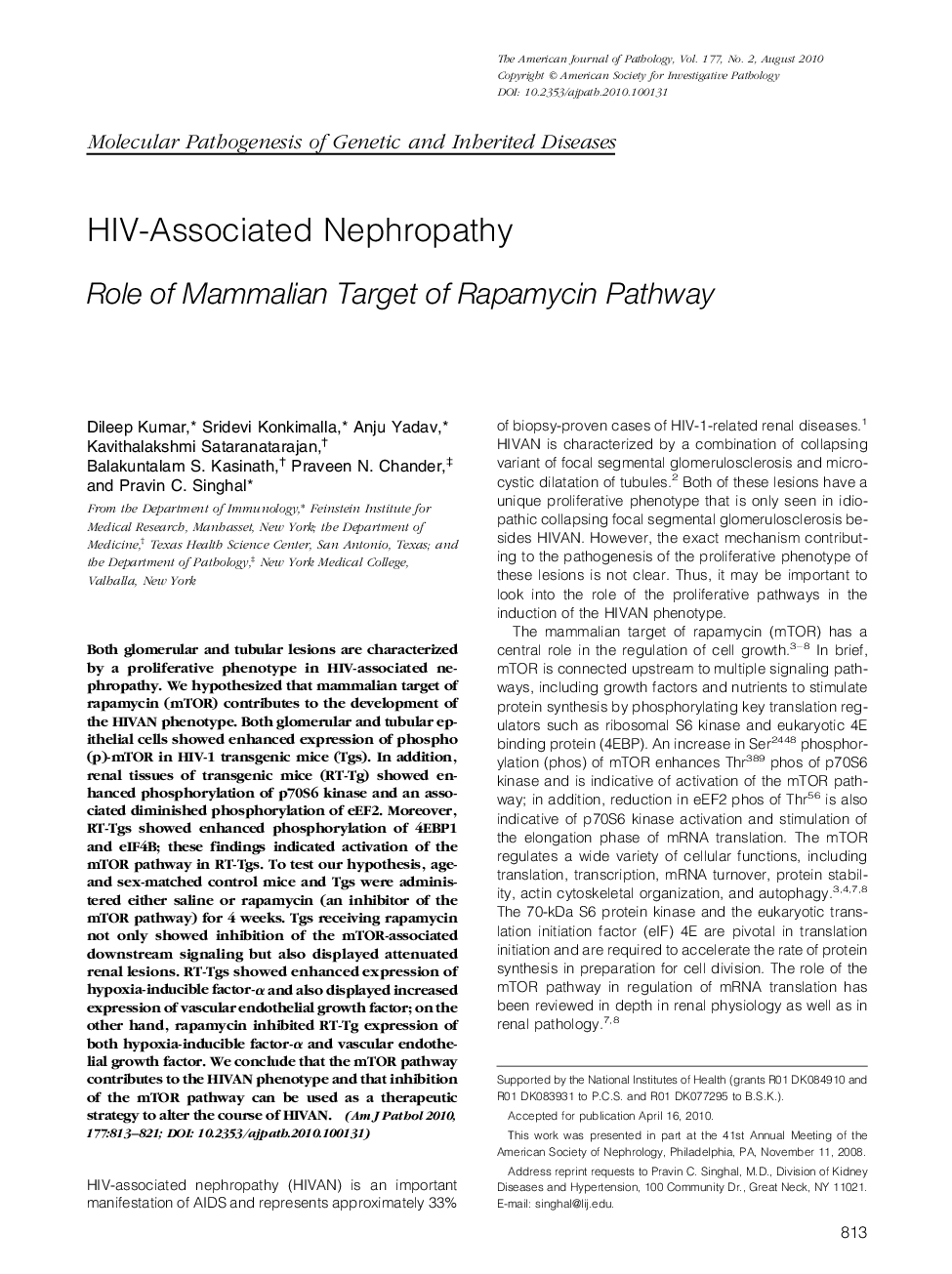| کد مقاله | کد نشریه | سال انتشار | مقاله انگلیسی | نسخه تمام متن |
|---|---|---|---|---|
| 5934967 | 1573439 | 2010 | 9 صفحه PDF | دانلود رایگان |

Both glomerular and tubular lesions are characterized by a proliferative phenotype in HIV-associated nephropathy. We hypothesized that mammalian target of rapamycin (mTOR) contributes to the development of the HIVAN phenotype. Both glomerular and tubular epithelial cells showed enhanced expression of phospho (p)-mTOR in HIV-1 transgenic mice (Tgs). In addition, renal tissues of transgenic mice (RT-Tg) showed enhanced phosphorylation of p70S6 kinase and an associated diminished phosphorylation of eEF2. Moreover, RT-Tgs showed enhanced phosphorylation of 4EBP1 and eIF4B; these findings indicated activation of the mTOR pathway in RT-Tgs. To test our hypothesis, age- and sex-matched control mice and Tgs were administered either saline or rapamycin (an inhibitor of the mTOR pathway) for 4 weeks. Tgs receiving rapamycin not only showed inhibition of the mTOR-associated downstream signaling but also displayed attenuated renal lesions. RT-Tgs showed enhanced expression of hypoxia-inducible factor-α and also displayed increased expression of vascular endothelial growth factor; on the other hand, rapamycin inhibited RT-Tg expression of both hypoxia-inducible factor-α and vascular endothelial growth factor. We conclude that the mTOR pathway contributes to the HIVAN phenotype and that inhibition of the mTOR pathway can be used as a therapeutic strategy to alter the course of HIVAN.
Journal: The American Journal of Pathology - Volume 177, Issue 2, August 2010, Pages 813-821